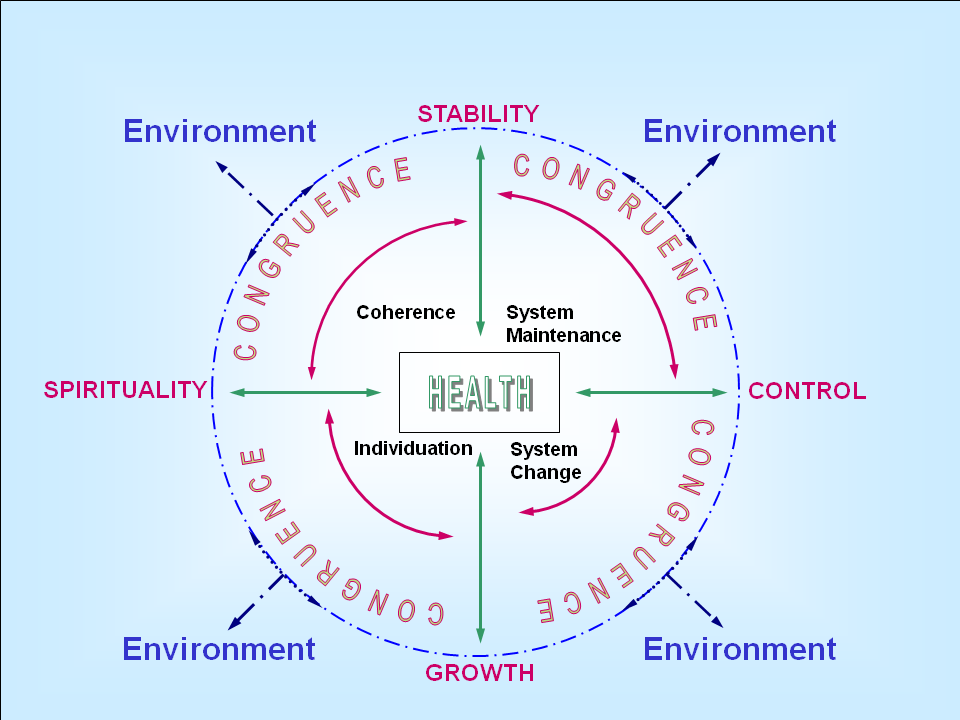The Systemic Process
The basic organization of systems as they seek congruence and ward off anxiety applies to individuals, families, and all larger social systems. Each system pursues four targets: stability, growth, control, and spirituality.
According to the Framework of Systemic Organization, all human and social systems seek congruence through a specific process, balancing four targets through the use of four process dimensions.

The graph depicts a system in constant motion.
Blue arrows and lines signify the exchange of energy and matter with the environment. Output occurs through the four targets, stability, growth, control, and spirituality (green arrows), entering the circumference of the system and from there the environment. Input from the environment enters the system via the targets (green arrows) to the core of the system.
Congruence can be achieved if the system addresses the four targets in a balance desired by the system. Some healthy systems prefer one target over the others. In fact, systems are distinguished by the extent in which they emphasize the targets and by the distinct behaviors they use to pursue them. The systemic process is applicable to all cultures but the distinct ways of balancing the targets and the behavioral strategies used to pursue the targets are culture-specific or family-specific. Family types, but not family health, are defined by these specific features. For family health to be possible, irrespective of the family type, all four targets need to be represented for congruence to occur. Congruence in the system is experienced as health.
The targets are abstract and their movement occurs largely subconsciously. More concrete, observable, and measurable, however, are the patterns pertaining to the four process dimensions, system maintenance, coherence, individuation, and system change (red arrows). Here too, systems actualize the four process dimensions unequally. The way they express them and the extent to which they express them signify the system's characteristics (personality, family pattern, culture). Patterns that are congruent with the environment and the system's subsystems lead to the experience of health.
Systems differ by the extent in which they emphasize the targets/process dimensions and by the distinct behaviors they use to pursue the targets/process dimensions. These differences in emphasis are marked by the red arrows in the diagram drawn in a different position in each quadrant of the circle.

 English
English  Español/Portugués
Español/Portugués  Deutsch
Deutsch 